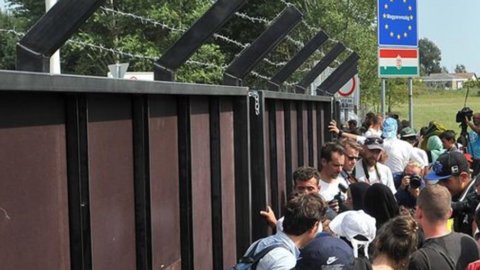In 2015, Estonia, Hungary, Kenya, Saudi Arabia and Tunisia, explains Jones, have announced or have begun the construction of barriers on their borders. We live in an age of globalization, but much of the world is increasingly focused on limitation of the free movement of persons.
The current data was elaborated by Elisabeth Vallet of the University of Quebec in Montreal: today in the world there are 65 walls, three quarters of which were built in the last 20 years. And in the United States, Republican presidential candidates are promising more. The Republican leader, Donald Trump has repeatedly proposed the construction of a wall along the entire border with Mexico. And on a Sunday morning talk show, another Republican candidate, Wisconsin Gov. Scott Walker, described building a wall on the US-Canadian border as "a legitimate issue to consider."
But above all the Hawaiian professor argues that existing border walls are neither cheap nor effective. Israel's wall in the West Bank, for example, cost more than $1 million per mile. According to US Customs and Border Protection, building and maintaining the current 670 miles of barrier on the US-Mexico border would cost $6,5 billion. Add to that another $12,6 billion to fortify the remaining 1.300 miles of the border with Mexico. To erect a wall along the 5.525-mile border with Canada would cost nearly $50 billion and would mean eliminating an airport runway, an opera house, homes, and businesses that currently stand on the border.
Nor is there much evidence that border walls work as intended. Indeed, prisons demonstrate that well-guarded walls can be extremely effective at preventing movement. But even prison walls are effective only the guards make sure they are not violated, and the guards can be bribed. The recent escape of the leader of the drug cartel Joaquin "El Chapo" Guzman from a Mexican prison highlights another vulnerability of the border walls: the tunnels. Since 1990, the US Border Patrol has found 150 tunnels under the Mexican border. In short, those with money will always be able to cross borders using false documents, bribes, or innovative infrastructure.
In fact, fortified borders are more effective at stopping poor migrants and refugees. And even then, rather than blocking migrants from entering, fortifications too often herd them to more dangerous crossings. The result is an increase in predictable deaths. The International Organization for Migration estimates that from 2005 to 2014, some 40.000 people died trying to cross a border. Unlike prison perimeters, borders can stretch thousands of miles, making them difficult to monitor properly. The US employs more than 20.000 border agents.
Of course, equipment such as cameras, motion sensors, drones, helicopters and vehicles allow agents to patrol long stretches of the border. But the need for monitoring border walls points to one of the fundamental truths about them: historically, most have proven to be quite useless. The most famous sections of the Great Wall of China were overgrown within a few decades of their construction. When Germany invaded France in WWII, it simply went around the Maginot Line. The Berlin Wall fell within 30 years of its construction.
Yet despite their high cost and low effectiveness, the walls remain popular with politicians who thus exhibit tangible evidence that something is being done on the issue of migration. High-tech surveillance and field agents may be more effective at preventing people from crossing a border, but a wall can be used as an object of political propaganda.





